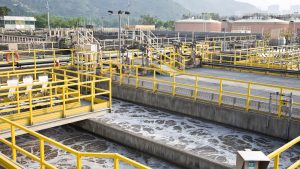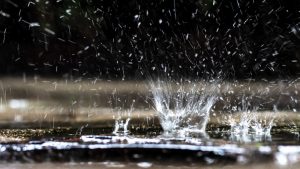The wastewater industry requires mechanical valves to ensure wastewater is treated correctly and can is reused safely for suitable purposes. The number of valves infused into a wastewater network is enormous, yet one minor damage can result in it entirely collapsing. In other words, if one valve malfunctions, it interrupts the treatment process by reducing the quality of wastewater generated by creating ways for contaminants to reenter. It could also significantly reduce the total amount of wastewater that would have ideally been recycled. As Australia currently grapples with the issue of water scarcity in its country, its government cannot risk such mistakes. Hence, wastewater utility providers must infuse mechanisms to guarantee each type of valve performs in its best condition. This article will describe different types of mechanical valves used in wastewater treatment and methods that can be employed to protect them.
Three Main Types of Mechanical Valves
There are various types of valves used for wastewater to pass through. From butterfly to knife, ball and globe valves, multiple mechanical valves are used for different purposes. All valves, however, will not be present in every wastewater treatment. Hence, according to the diverse needs of wastewater managers, choosing the right type of valves may be difficult. A wastewater manager, however, must incorporate three mandatory mechanical valves regardless of other functions. They include the following:
Check Valves
Check valves are self-operating valves mainly used to prevent the wastewater from reverse flow when the pump is turned off. For it to function effectively, they rely on differential pressure points of the wastewater that flows. It is also known as one-way valves and no-return valves. A check valve is an umbrella term for many other check valves used in different industries, including swing and ball valves. Typically, the most common type of check valve used is the swing check valve. They are made with iron and include corrosion-resistant internal mechanisms. In wastewater treatment centres, check valves help prevent the mixing of different media in reservoirs. Hence, when wastewater has already been treated, check valves ensure not to flow back to the untreated wastewater section when the pump is not operating.
Moreover, backflow water tends to damage assets in wastewater treatment such as pumps, filters, compressors and more. One material that can significantly damage the treatment asset is the water hammer. By using check valves, this could be prevented.
Shutoff Valves
Shutoff valves are required when the water flow has to halt to carry out repairs or maintenance for the wastewater treatment assets. They are a typical feature in wastewater treatment and deal with fluid transference at small and large scales. Butterfly and ball valves are also used for this purpose. The best type of shutoff valve is a pinch or squeeze valve, as it eliminates leakages and is easy to repair and maintain. The gate valve is the most common type of shutoff valve used in wastewater treatment.
Air Valves
A specific limit of air pockets in wastewater can lead to blockages in the flow of sewage. Quantities of air pockets can be collected when there are incomplete filling lines, when dissolved air is released from the raised temperature or the decreased pressure, or when air is sucked into openings. It also maintains a healthy pressure during drainage and, thus, removes the risk of air contaminants entering the wastewater treatment or breaking pipes due to negative pressure. Air valves are hence used to remove air from the pump column and the force main. In turn, the wastewater treatment will have much greater flow and less reason for surges. One significant challenge in using air valves is the increased pressure to maintain them properly. The most commonly used air valves include automatic air valves, air and vacuum valves, and combination air valves. If adequately incorporated and maintained, managers can reduce their carbon footprint and the overall cost of wastewater operations.
Three Technologies That Can Ensure Valves Have Optimal Performance
The three types of valves described above and others can function for a long duration only if they are maintained and repaired correctly. While maintenance and repairs are costly, infusing the right technology to detect anomalies and taking positive steps to increase the life cycle of valves is a guaranteed mode of ensuring valves are optimally used. Here are three technologies that wastewater managers should incorporate:
Prevention Is Better Than Cure: Adopting Predictive and Prescriptive Analytics
Predictive and prescriptive analytics can detect issues in wastewater assets in their initial stages. The moment it does so, it sends a warning sign to the wastewater manager to take steps. Some robust software solutions also provide the analytical capability to recommend what next steps the wastewater manager should take. What is interesting about this is that the technology assesses the current finances and resources available by the utility sector and provides a solution based on it. It hence is a practical and sustainable solution that removes the time wasted planning what should be done. Once the manager sees the notification, they can schedule maintenance according to the asset’s criticality. Thus, wastewater assets will not be broken by eliminating anomalies from its root. As a result, any downtime or waste that could have occurred also gets prevented.
Manufacturing Valves That Are Durable From the Get Go: Incorporating Digital Twins to the Designing and Creation Stage
One way to reduce the times an asset requires maintenance is to ensure that standardised valves are incorporated. Wastewater engineers and designers can use the power of digital twins to help them make the best quality valve system. They can design various prototypes, test their sustainability, run it through hypothetical situations and ensure they can withstand potential disasters. Once all test runs provide a satisfactory result, engineers can manufacture a valve that meets all quality standards. In other words, managers can now complete a project’s traditional trial and error stage without wasting resources. If properly maintained with the help of predictive and prescriptive analytics, wastewater managers can rely on their valves to sustain for a long duration.
Cover Mechanical Valves Running in an Entire City With One Technology: Unlock the Power of Geographic Information System (GIS)
GIS technology allows wastewater managers to locate and monitor valves located city-wide. This means instead of incorporating predictive and prescriptive analytical tools in different wastewater treatment factories, wastewater utility service providers have the flexibility to save public finances by overlooking all assets in an entire region from one location. It can precisely map out the wastewater asset networks and restructure maintenance by dispatching maintenance teams to the most critical locations in the region instead of only one factory. This allows managers to strategise their financial budgets accordingly. Eliminate manual checkups and automate wastewater maintenance in one go by implementing GIS technology.
Robust Valves Are at the Heart of Wastewater Treatment
Valves networks, similar to pumps, are used to transport wastewater from one point to another. This heightens the need to ensure valves are in their best condition consistently. From transporting wastewater to ensuring the quality and quantity of wastewater are maintained, all functions of the wastewater industry are connected to the feasibility of its valves. Take time to comprehensively understand the type of valves integrated into wastewater treatment facilities and learn how industry 4.0 technologies can help maintain them.







